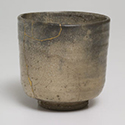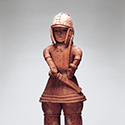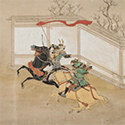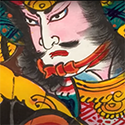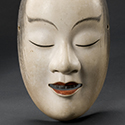|
|
| Show All 51 Results (Text Only) |
|
| Art of the Edo Period (1615–1868) |
|
| The Metropolitan Museum of Art
|
A brief overview of artistic production in Japan during the Edo or Tokugawa period. With 9 related artworks.
Go to Museum Resource: http://www.metmuseum.org/toah/hd/edop/hd_edop.htm | |
|
|
|
| Art of the Pleasure Quarters and the Ukiyo-e Style |
|
| The Metropolitan Museum of Art
|
A lengthy discussion of the social developments in the Edo period that gave rise to literary and visual arts such as kabuki theater and ukiyo-e paintings and woodblock prints. With 5 related artworks.
Go to Museum Resource: http://www.metmuseum.org/toah/hd/plea/hd_plea.htm | |
|
|
| Art of the Samurai: Japanese Arms and Armor, 1156–1868 |
|
| The Metropolitan Museum of Art
|
Online presentation of a 2009-2010 exhibition, the "first comprehensive exhibition devoted to the arts of the samurai" and "the first exhibition ever devoted to the subject of Japanese arms and armor conservation." With images of 27 objects.
Go to Museum Resource: https://www.metmuseum.org/exhibitions/listings/2009/art-of-the-samurai/photo-ga... | |
|
|
|
| Arts of the Samurai [PDF] |
|
| Asian Art Museum of San Francisco
|
"The term samurai is derived from the word saburau, or “one who serves.” The evolution of the samurai from mounted guards to the nobility (during the twelfth century) and their subsequent ascent to military leaders of Japan (until imperial restoration during the nineteenth century) is chronicled in distinctive warrior arts and literary tradition. This packet examines the samurai through precious art objects from the museum’s collection. These include authentic military equipment (arms and armor), paintings depicting famed conflicts, ceremonial attire, and objects created for religious and cultural pursuits strongly connected with the samurai class."
Go to Museum Resource: https://education.asianart.org/wp-content/uploads/sites/6/2019/12/ArtsofSamurai... | |
|
|
|
| Bu and Bun: The Arts of War and Peace |
|
| Asian Art Museum of San Francisco
|
In addition to superior strategic and military ability, most elite samurai were expected to be versed in the cultural arts. The warrior’s ideal balance of military and artistic skill is captured well in this description of the sixteenth century daimyo Hosokawa Yusai (1534–1610): “Renowned for his elegant pursuits, he is a complete man combining arts [bun] and arms [bu]. A man of nobility, a descendant of the sixth grandson of the emperor Seiwa, he was a ruler endowed with awesome dignity and inspiring decorum…He built a splendid castle, which was majestic, beautiful and high…He discussed Chinese poetic styles and recited by heart the secret teachings of Japanese poetry…" See also Archery Practice.
Go to Museum Resource: https://education.asianart.org/resources/bu-and-bun-the-arts-of-war-and-peace/ | |
|
|
|
| Show All 51 Results (Text Only) |


